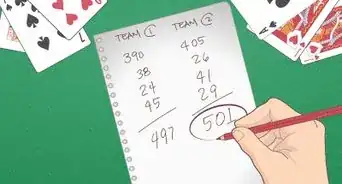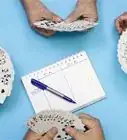wikiHow is a “wiki,” similar to Wikipedia, which means that many of our articles are co-written by multiple authors. To create this article, 9 people, some anonymous, worked to edit and improve it over time.
wikiHow marks an article as reader-approved once it receives enough positive feedback. In this case, 91% of readers who voted found the article helpful, earning it our reader-approved status.
This article has been viewed 234,216 times.
Learn more...
Whist is the 18th-century ancestor to many trick-taking card games, such as Bridge or Hearts. In its original form, it is a fun game of strategy and communication between four players. A more recent and complex variant, called bid whist or contract whist, has the players bet on how many tricks they can take before the game begins.
Steps
Basic Whist
-
1Divide into two partnerships. Whist is always played between two teams.[1] Have players sit in a circle, each player between their two opponents and across from their partner.
- For example, the two members of Team A and the two members of Team B sit down in ABAB order.
-
2Shuffle the cards and deal them out to each player. Begin with the player to your left and deal clockwise. Each player should end up with exactly 13 cards, yourself included.
- You can all agree on who gets to be first dealer, or decide randomly.
- Remove any jokers from the deck before dealing.
- When playing with strangers or in a tournament, one player shuffles, a second player cuts the cards, and a third player deals them out. This reduces opportunity for cheating and is a common standard for card games.
Advertisement -
3Reveal the last card dealt to all the players. The suit of this card (hearts, spades, clubs, or diamonds) is the Trump Suit for this round and will always "beat" cards from the other suits. (Read on for more details.)[2]
- This card is part of the dealer's hand. Make sure everyone gets a chance to look at it before the dealer picks it up with the rest of his hand.
- If the last card dealt doesn't end up in front of the dealer, everyone should count their hand and make sure they have 13 cards exactly. Remember, always deal hands beginning with the player on the dealer's left and moving clockwise.
- This is the only card revealed. All others are hidden in their owner's hand until played.
-
4Inform everyone of the order of cards. Each card is ranked according to the standard system, with Aces high.
- From lowest to highest: Two, Three, Four, (...), Nine, Ten, Jack, Queen, King, Ace.
-
5The player to the dealer's left plays a card face up.[3] This card remains on the table visible to everyone.
- This is called leading, since it is the only card on the table. Once a trick is taken, the cards will be moved to the side and whoever took the trick will lead.
- A player may lead with any card.
-
6The next three players take turns playing a card of the same suit. Moving clockwise (left), each player in turn places a card from their hand face up next to the previous cards.[4]
- If a player has any card in hand with the same suit as the original card, he must put a card down of that suit.
- If he has no cards of the original suit, he may play any card from his hand.
- If more than one suit is face up on the table, only the original suit led restricts what cards someone can play.
- For example, player A leads with a 10 of Clubs. Player B chooses from the Clubs in her hand and puts down a King of Clubs. Player C doesn't have a single Club, so he chooses from any card in his hand and puts down a 3 of Diamonds. Player D has the Jack of Clubs in hand as their only Club and must play it.
-
7Determine who takes the trick. The stack of four face up cards is called a trick. One player will take this trick and put it face down to one side to be used later for scoring. Follow these simple rules to determine who wins the trick and gets to take it:[5]
- If one or more cards from the trump suit was played, whoever played the highest trump card wins.
- If there are no trump cards in the trick, whoever played the highest card of the suit led wins.
- Remember, the trump suit was determined by the revealed card earlier. Write it down next time if people have trouble remembering.
- Do not put the cards from the trick back into your hand. They will not be played again for this round.
-
8The winner of the last trick leads for the next one. After moving the last trick to his personal pile, the winner places another card down. Every trick follows the same rules:
- The leader may play any card from their hand.
- The other 3 players take turns in clockwise order from the leader. Each player must play a card of the same suit led if she has it. Otherwise, she may play any card from her hand.
- Whoever has the highest trump card wins the trick. If there are no trump cards in the trick, the highest card of the suit led this trick wins.
-
9Continue to play tricks until everyone is out of cards. Everyone should run out of cards on the same trick since the cards were dealt evenly.
- In order to make scoring easier, try to keep each trick you win distinct. You can do this easily by stacking them on top of each other but reversing their orientation. (The first trick is oriented North-South, the second is East-West, the third is North-South, etc.)
-
10Determine each team's score. You score points as a team, not as an individual.
- Count each team's tricks. If Frodo took 3 tricks this round and his partner Sam took 4, they combine this into one number: 7.
- The winning team subtracts 6 from the number of tricks they won. This is their score for the round. (Frodo and Sam would earn 1 point.)
- The losing team scores no points this round.
- Remember to count tricks (groups of 4 cards) and not the number of individual cards won.
-
11Play additional rounds until a team scores a total of 5 points. To set up for the next round:
- Shuffle all cards together.
- The player to the last dealer's left is the new dealer. (Continue rotating clockwise each round.)
- The last card dealt is revealed as before to determine the trump suit. There is only ever one trump suit per round.
Bid Whist or Contract Whist
-
1Make sure all players are familiar with whist rules. Bid Whist begins with a bidding process that will make little sense to someone who has not seen whist played before.
- (Fortunately, the rules for basic whist are written right on this page!)
-
2Shuffle two different Jokers into the deck. Players should agree which Joker is the "Big Joker" and which is the "Little Joker". The deck should now contain 54 cards.
-
3Deal 12 cards to each player and 6 in its own pile. This pile of six is called the kitty. Players may look at their hands but the kitty remains face down.[6]
-
4The player to the dealer's left makes a bid or passes. There are several varieties of bid a player can make. This is essentially a bet (or "contract") that the player's team will be able to take a certain number of tricks.[7]
-
5Each bid must include a number from 1 to 7. This is the number of points the bidding player claims they can make.
- Since the first six tricks a team wins aren't worth any points, add 6 to the bid to determine how many tricks the player's team has to take to succeed. A bid of 3 is a promise to win at least 9 tricks.
-
6A winning "Downtown" bid changes the value of the cards. A bid of "Four" or "Four Uptown" is a promise to win at least 4 points (10 tricks) and to follow the usual ranking of the cards. A bid of "Four Downtown" promises to win at least 4 points and follow a partially reversed card ranking:[8]
- The uptown (or normal) card ranking from lowest to highest is: 2, 3, (...), 10, J, Q, K, A, Little Joker, Big Joker. Both Jokers are considered trumps.
- The downtown card ranking from lowest to highest is: K, Q, J, 10, (...), 2, A, Little Joker, Big Joker. Both Jokers are considered trumps.
- Note that Aces and Jokers remain high in the Downtown ranking!
-
7"Notrump" bids promise to play a round without a trump suit. A bid of "Seven Notrump" promises that the bidder's team will win seven points (all 13 tricks) and that there will be no trump suit this round.
- If a Notrump bid wins, jokers are worthless this round and can never win a trick.
- You cannot make a "Notrump Uptown" or "Notrump Downtown" bid.
-
8Each player in clockwise order bids or passes. Each bid must be higher than the last bid spoken, following these rules:
- A bid is always higher than a bid with a lower number. Any bid of "Four" beats any bid of "Three".
- A "Downtown" bid is higher than an "Uptown" bid of the same amount. Remember that an unspecified bid (e.g. "Five") is assumed to be an Uptown bid.
- A "Notrump" bid is higher than any other bid of the same number.
-
9When the other 3 players pass, the last bid spoken wins. The rules declared in that bid are now in effect this round, once the winner makes some decisions:
- If the winning bid was a Trump, Uptown, Downtown, or unspecified bid, the winner decides which suit is the trump suit this round.
- If the winning bid was a Notrump bid, the winner decides whether to play with Uptown or Downtown ranking.
- If the first three players to speak all pass, the dealer must make a bid and automatically wins the bidding.
-
10The winning bidder looks at the pile of cards set aside. The six cards in this "kitty" count as the first trick for the winner. There are additional special rules associated with these:
- Unless the winning bid was Notrump, the winner reveals the cards in the kitty to all players.
- The winner may now secretly exchange any number of cards in his hand for an equal number in the kitty. The other players can see how many cards are being exchanged, but not which ones.
-
11Play a round of whist. Apart from the special rules determined by the winning bid, including the value of Jokers, the trick-taking portion of the game is unchanged.
- The rules for this portion are detailed in the Basic Whist section.
- Since the winner of the bidding portion took the first trick (the kitty), that player leads for the next trick.
-
12Determine scoring. Only the team that won the bidding this round can score points, but they have the potential to lose points as well:
- The bid-winning team counts the number of tricks they took this round. This includes the "kitty" set aside while dealing. (It counts as one trick.)
- If the bid-winning team succeeded in its points goal, they score points normally. (Remember that a team's first six tricks provide no points. Each additional trick is worth one point.)
- If the bid-winning team failed to meet its goal, it loses points equal to the amount they fell short. For instance, if the winning bid was Seven and that team only scores three points (9 tricks), that team loses four points.
-
13Play additional rounds until a predetermined score is reached. A common system is to play until one team earns 5 points total (and wins the game) or -5 points total (and loses).
References
- ↑ https://www.trickstercards.com/home/help/HowToPlay.aspx?file=whist-basics.html
- ↑ https://www.britannica.com/topic/whist
- ↑ https://bicyclecards.com/how-to-play/whist/
- ↑ http://www.pagat.com/whist/whist.html
- ↑ https://bicyclecards.com/how-to-play/whist/
- ↑ https://www.trickstercards.com/home/help/HowToPlay.aspx?file=whist-basics.html
- ↑ http://www.pagat.com/boston/bidwhist.html
- ↑ http://www.pagat.com/boston/bidwhist.html
- ↑ http://www.pagat.com/whist/whist.html
Community Q&A
-
QuestionCan you put a played card back into your hand?
 Community AnswerNo. That can be considered cheating.
Community AnswerNo. That can be considered cheating. -
QuestionHow do I decide who starts as the dealer?
 Community AnswerThe dealer is decided by some random assignment, such as who is dealt an ace first. Or, in less formal settings, whoever wants to deal first can do so.
Community AnswerThe dealer is decided by some random assignment, such as who is dealt an ace first. Or, in less formal settings, whoever wants to deal first can do so. -
QuestionWhat is the best card to lead?
 Community AnswerIf you have one, an ace! Higher cards are good, but keep low trump cards for later; they can easily be destroyed at this point.
Community AnswerIf you have one, an ace! Higher cards are good, but keep low trump cards for later; they can easily be destroyed at this point.
Warnings
- It is never allowed to mention a card in your hand or reveal them, except for the single card revealed to determine trumps.⧼thumbs_response⧽
Things You'll Need
- Exactly 4 players
- A standard 52-card deck of playing cards
- Two Jokers with different appearances (Bid Whist Only)
- An optional second deck eliminates shuffling time between rounds.
About This Article
Whist is a 4-player card game where players try to win tricks to score points. At the start of the game, the players split into 2 teams of 2 and choose a dealer. The dealer gives each player 13 cards, one card at a time, face down, beginning with the player on their left. The last card for the dealer is dealt face up. The card is the trump card. The cards are ranked with Ace being the highest and 2 being the lowest, with the trump suited card outranking all other cards. For example, if the trump suit is diamond, a 2 of diamonds outranks a 10 of clubs. The player on the dealer's left leads first and may play any card, with play continuing clockwise. Each player in turn plays a card, following suit if possible. When it is the dealer's turn to play to the first trick, they pick up the trump card and it becomes part of the dealer's hand, then they play a card to the trick. If a player cannot follow suit, they may play any card. Four cards played (including the card led) constitute a trick. A trick is won by the person who played the highest trump. Any trick not containing a trump is won by the person who played the highest card of the suit led. The winner of each trick leads next. Play continues until all of the cards are gone. When it is time to count scores, each trick won is worth one point. The team with the most points at the end of play wins the game. If you want to learn more, like how to bet how many tricks you'll win during the round, keep reading!

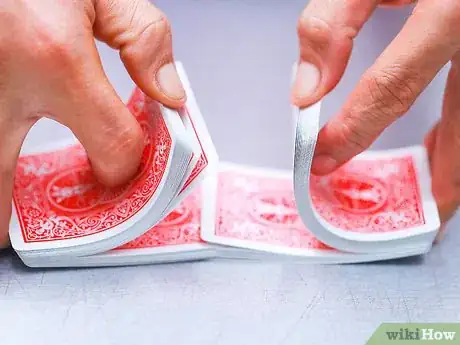


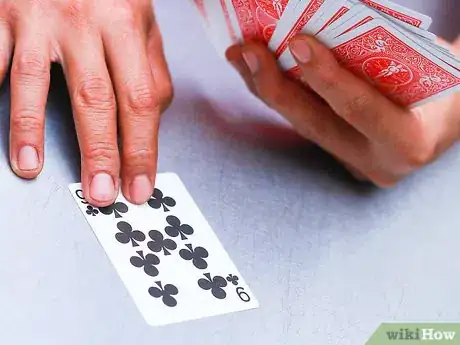







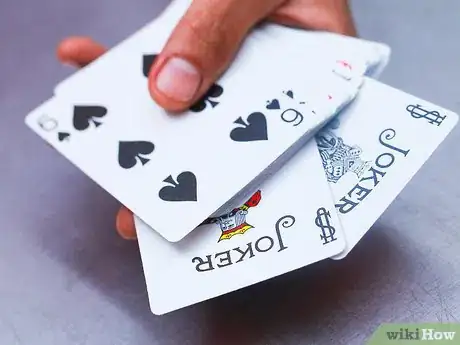


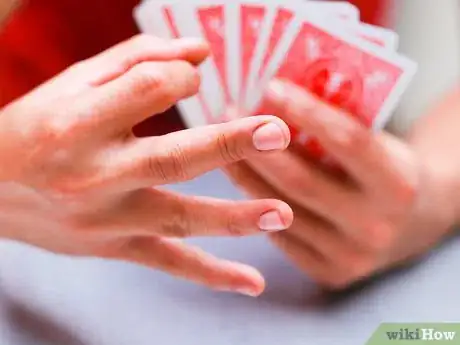
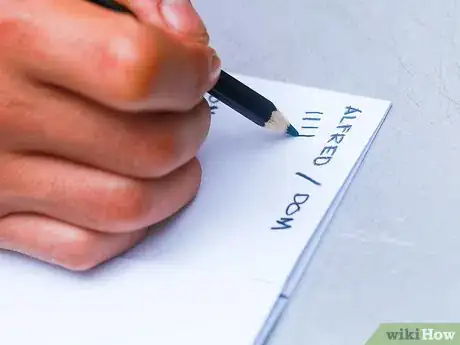
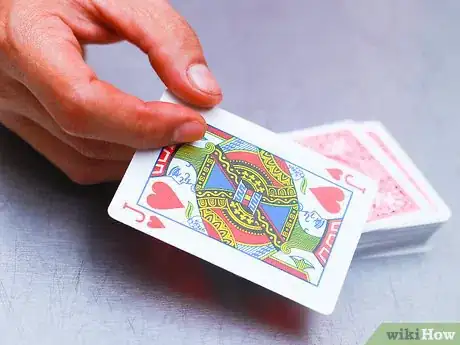



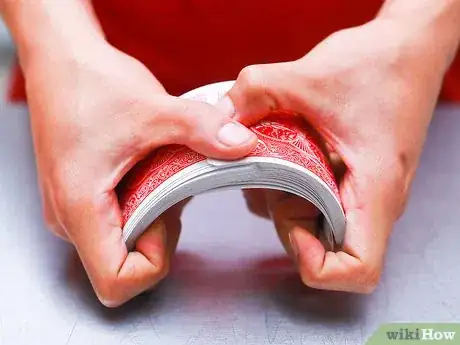
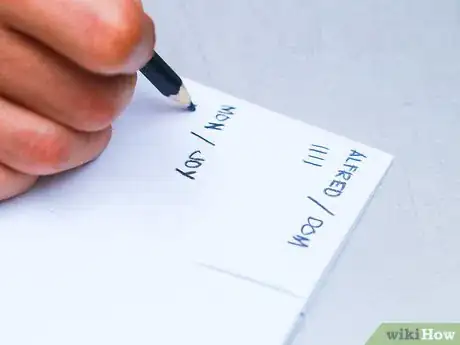

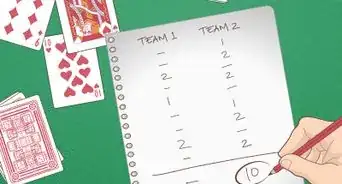
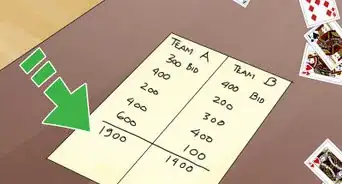
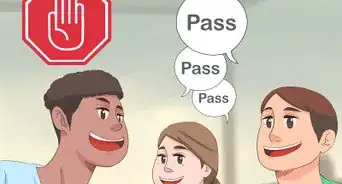
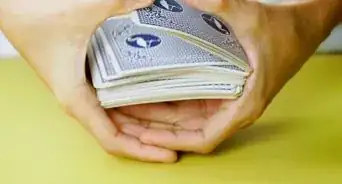
-Step-7-Version-2.webp)
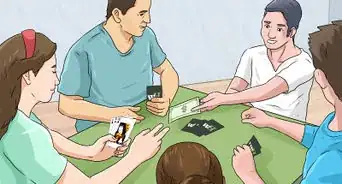
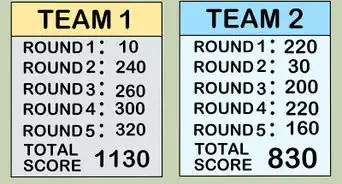
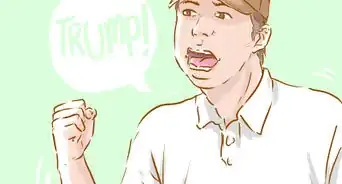
-Step-9-Version-2.webp)
